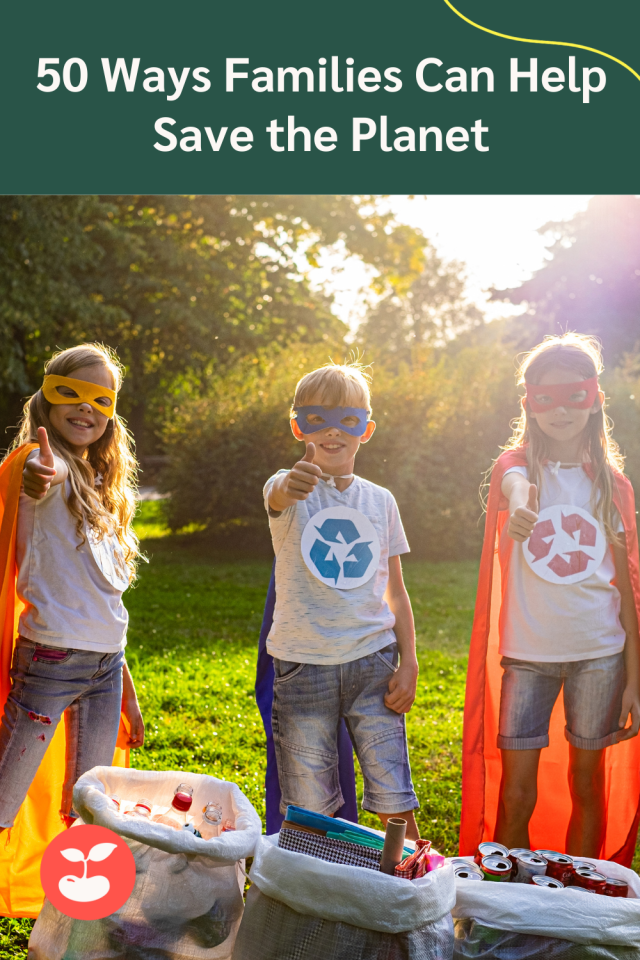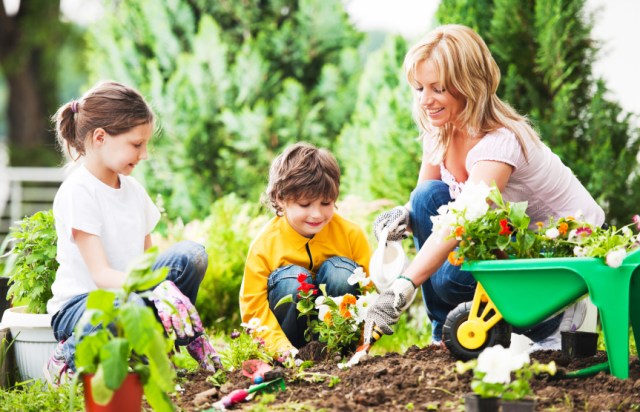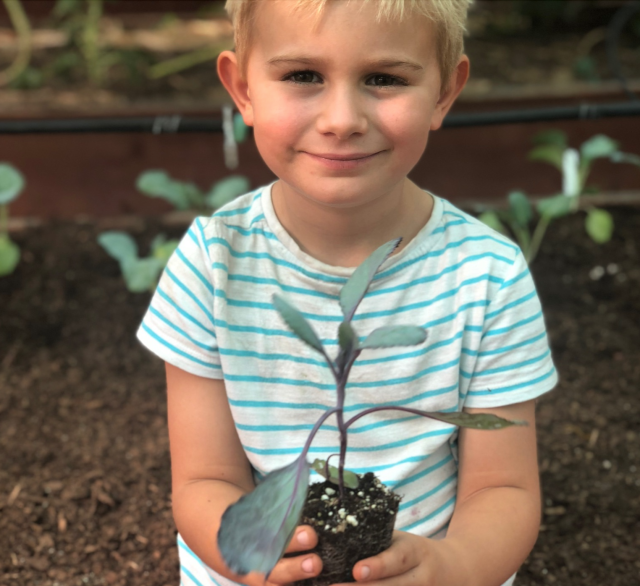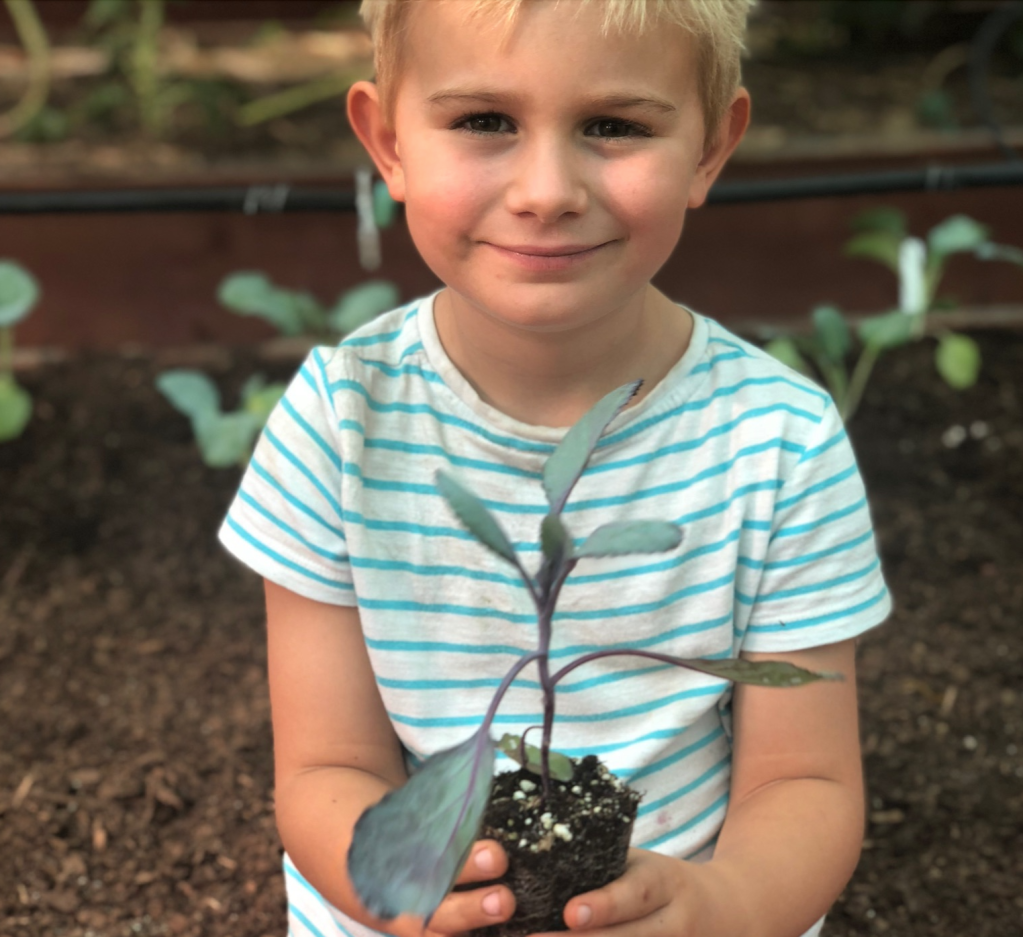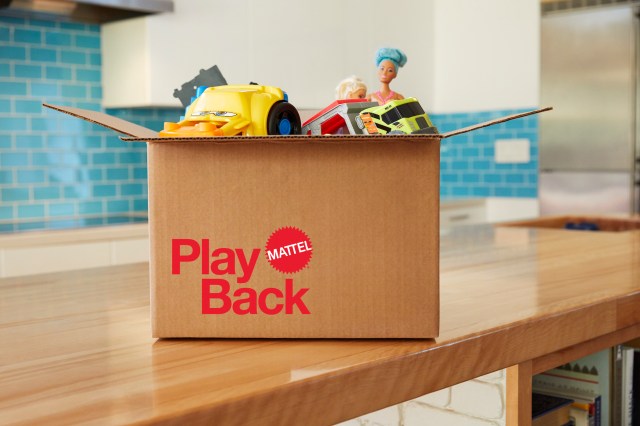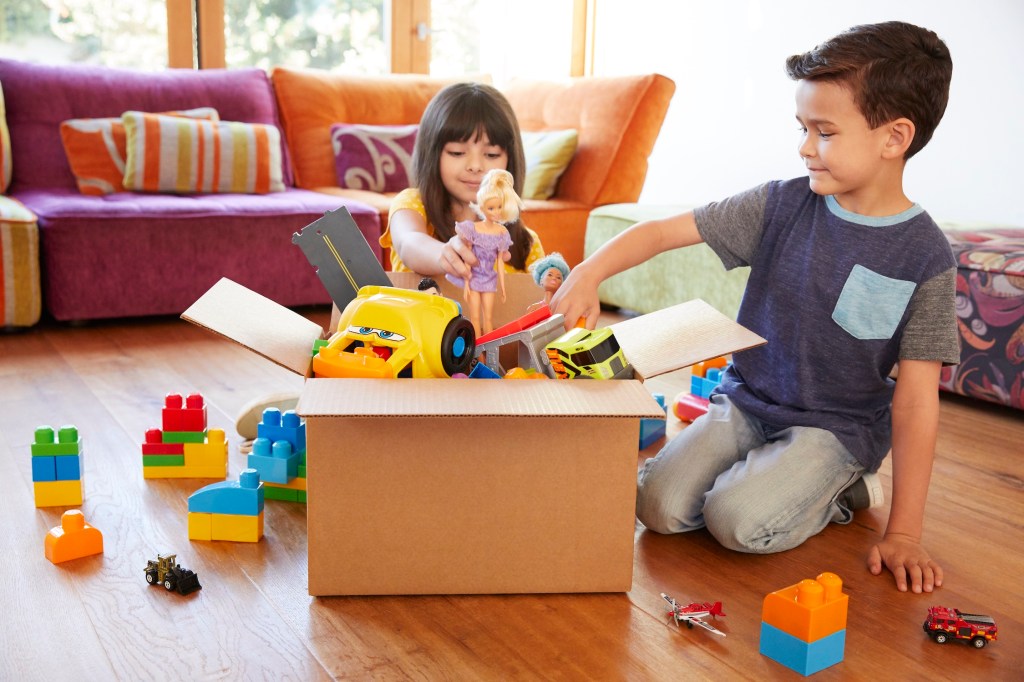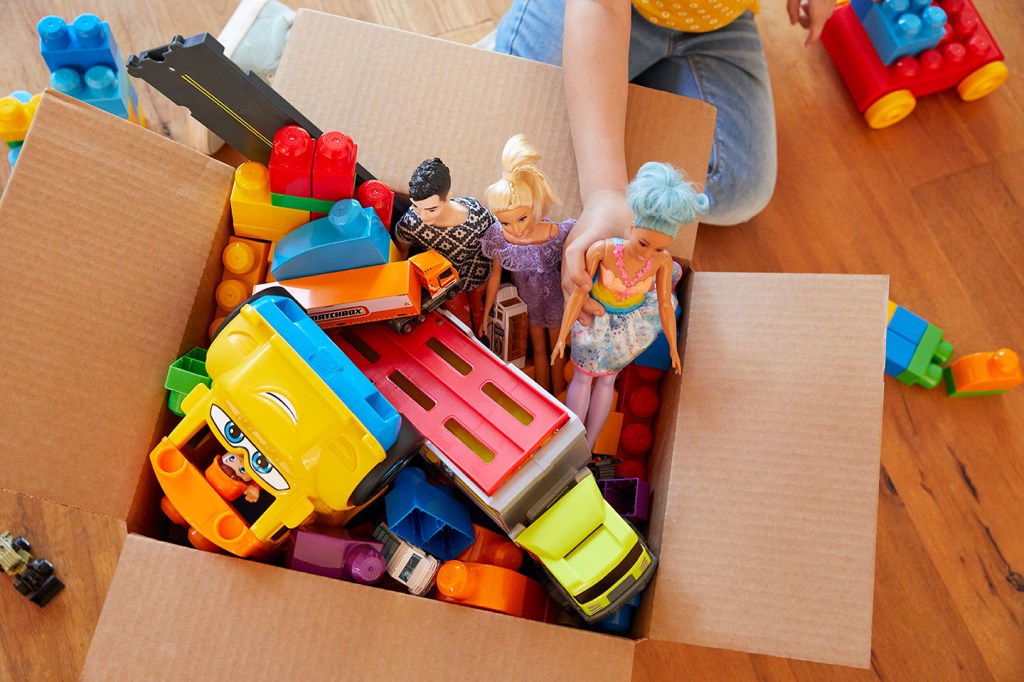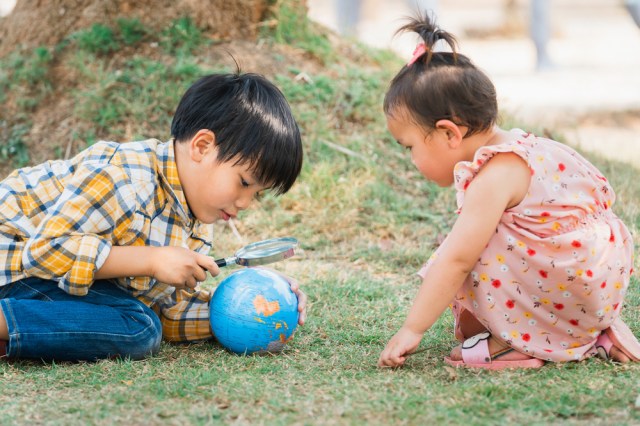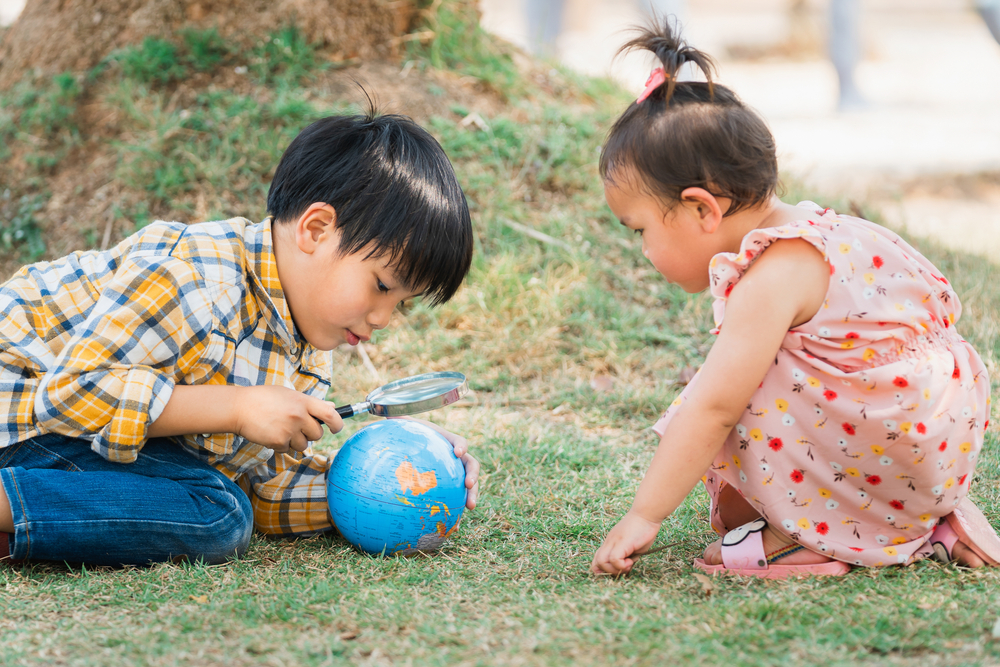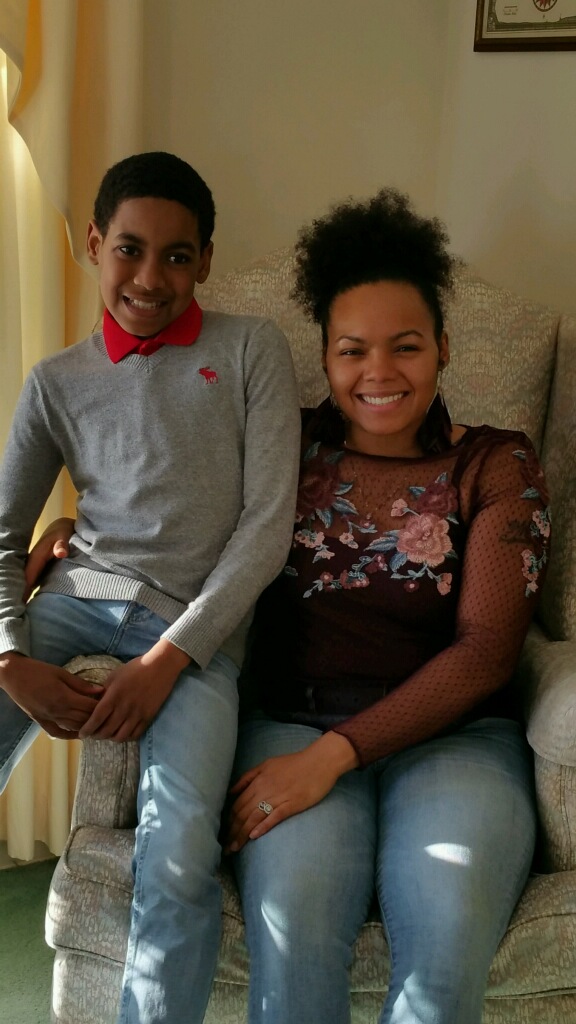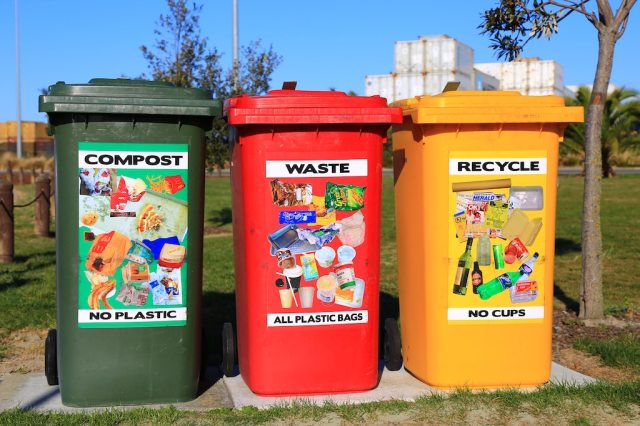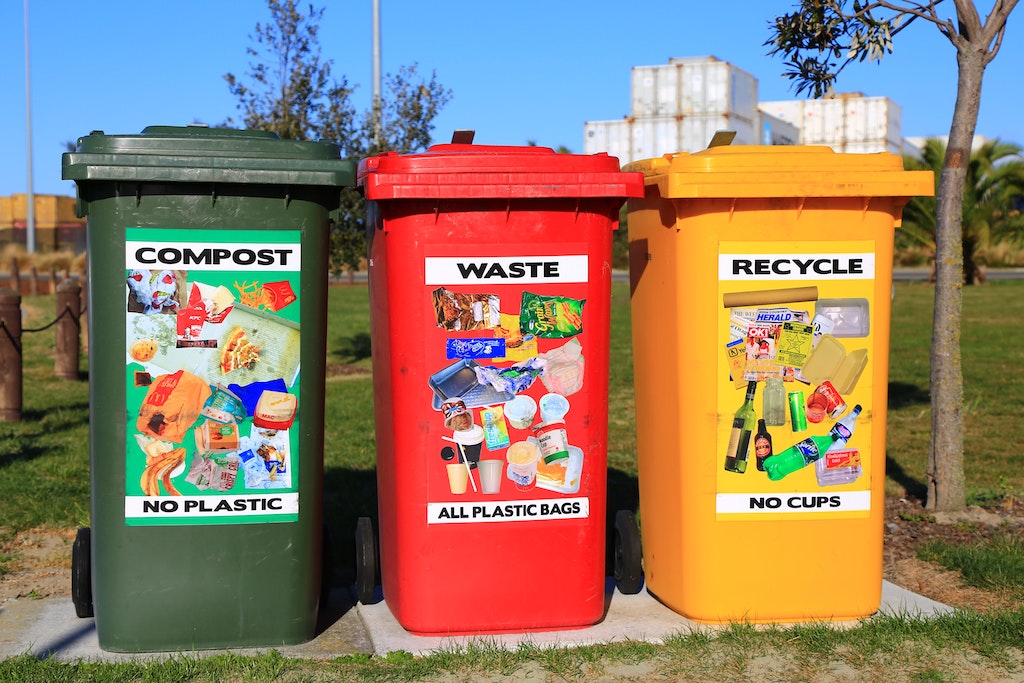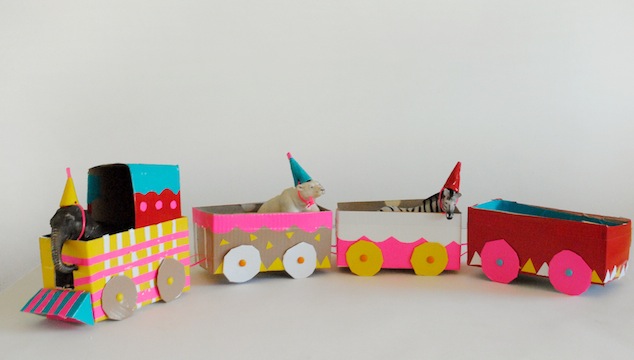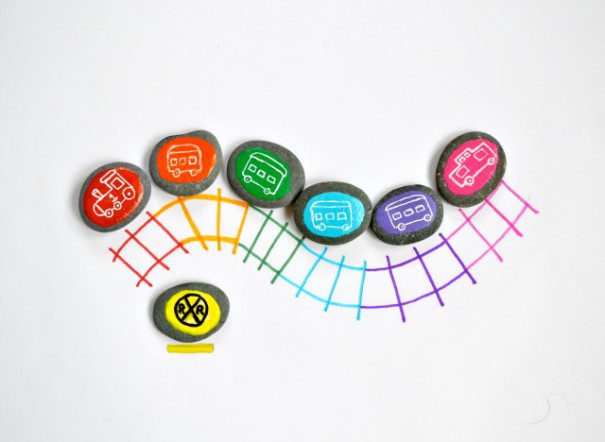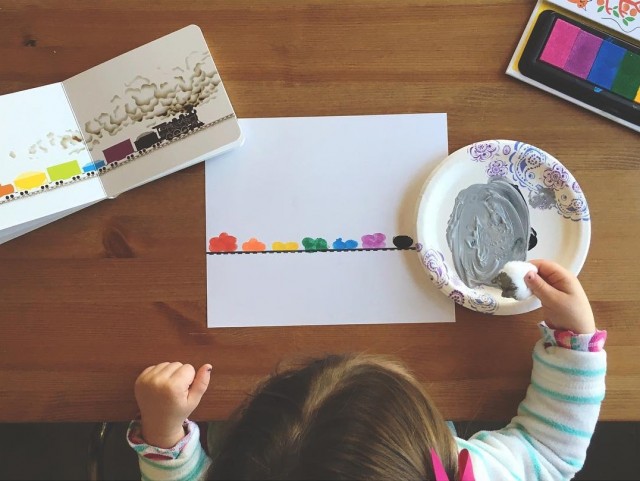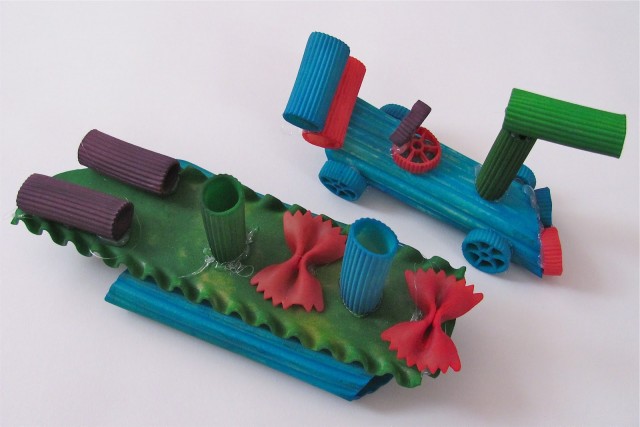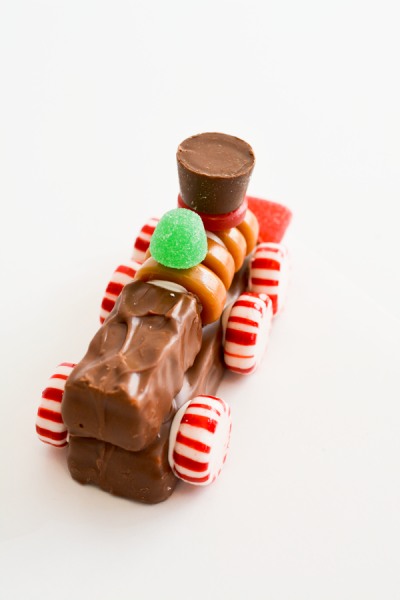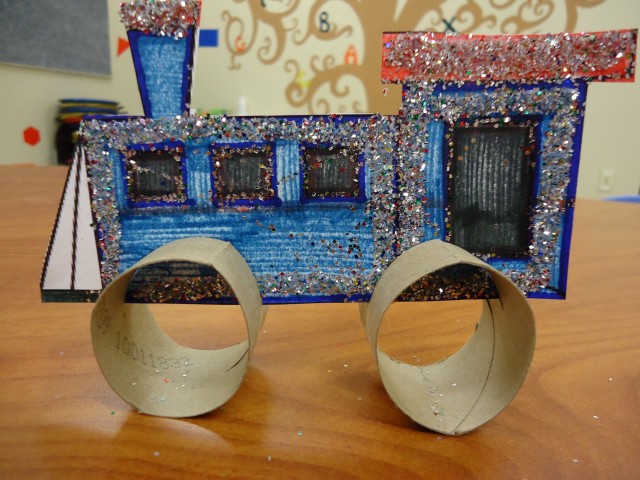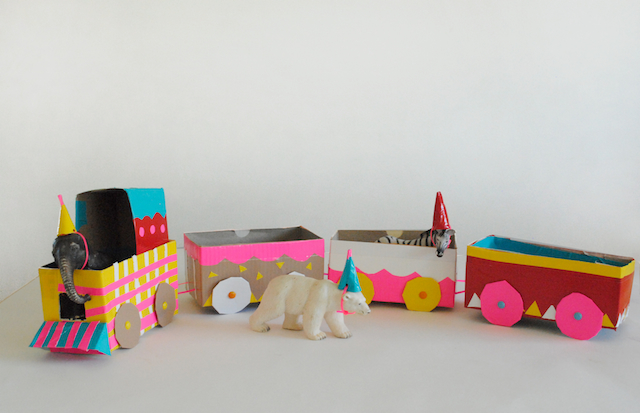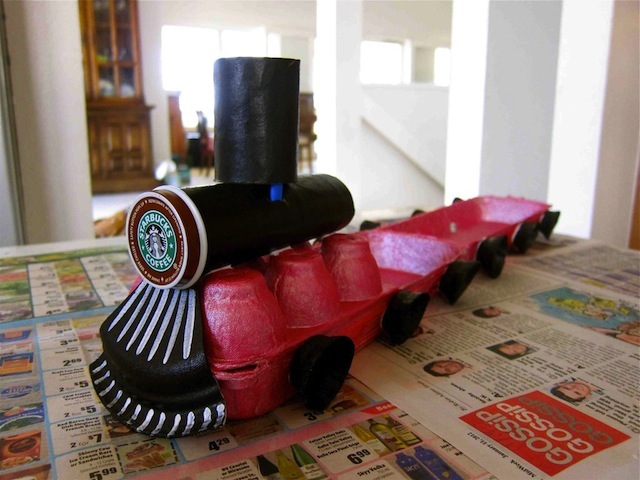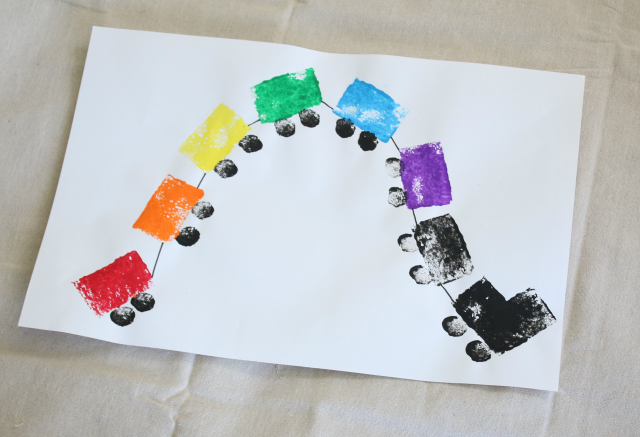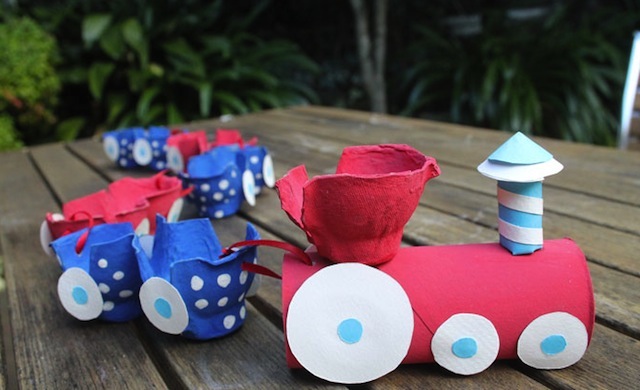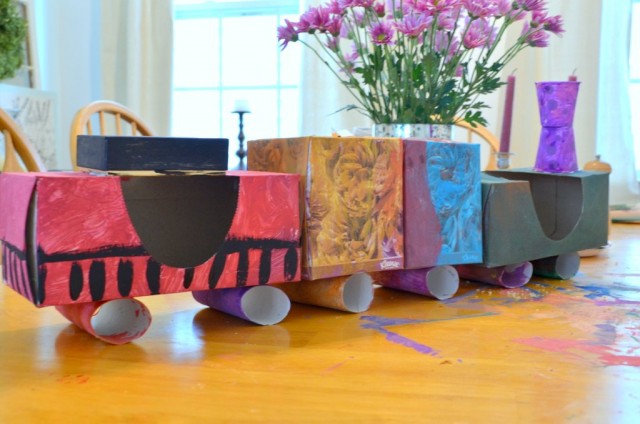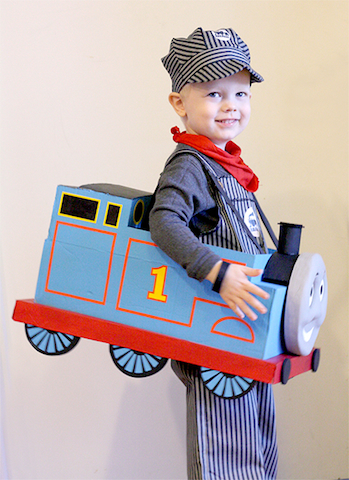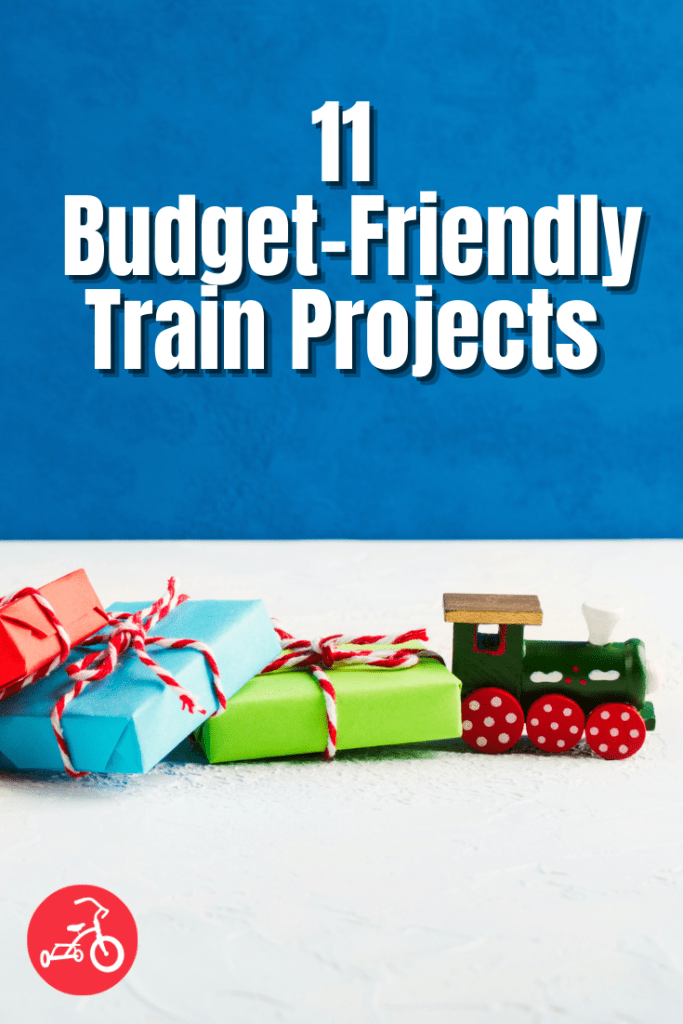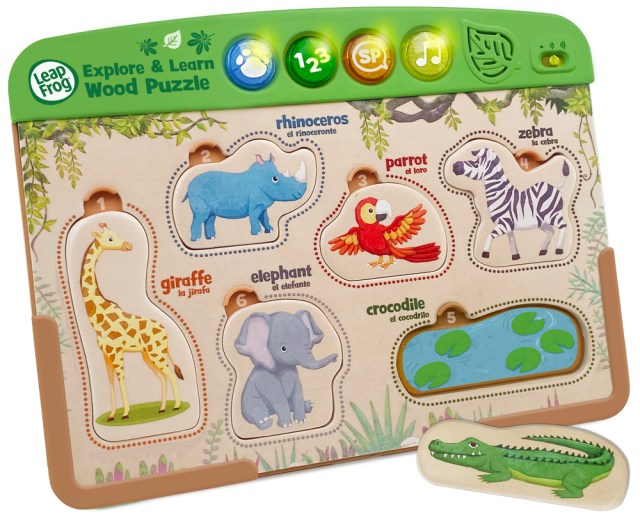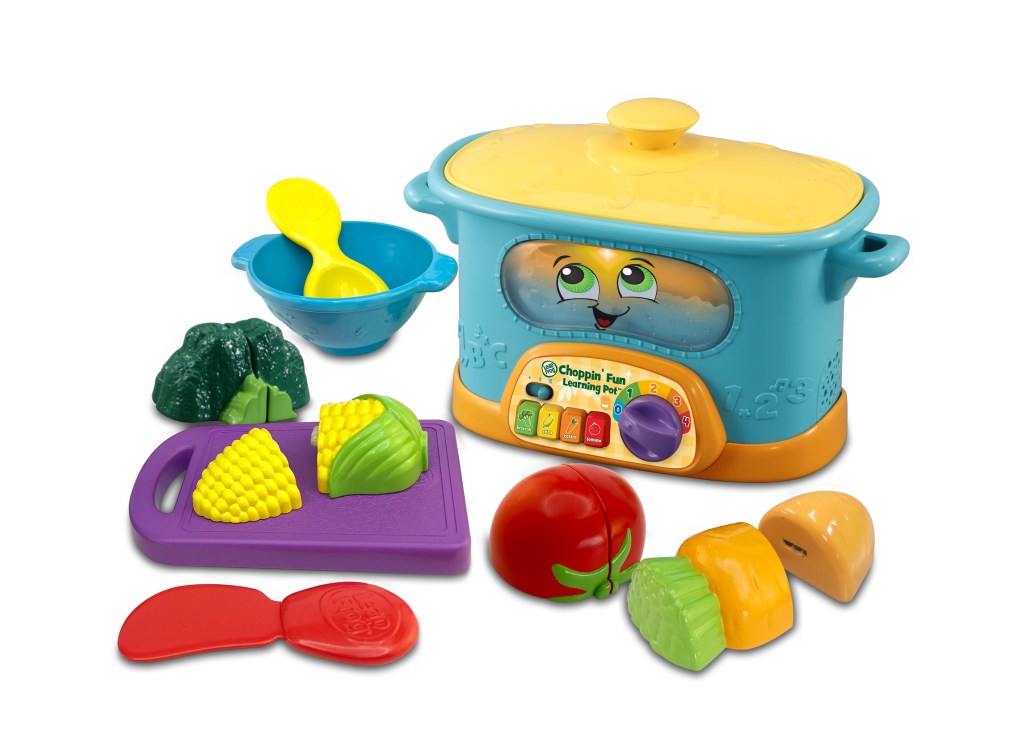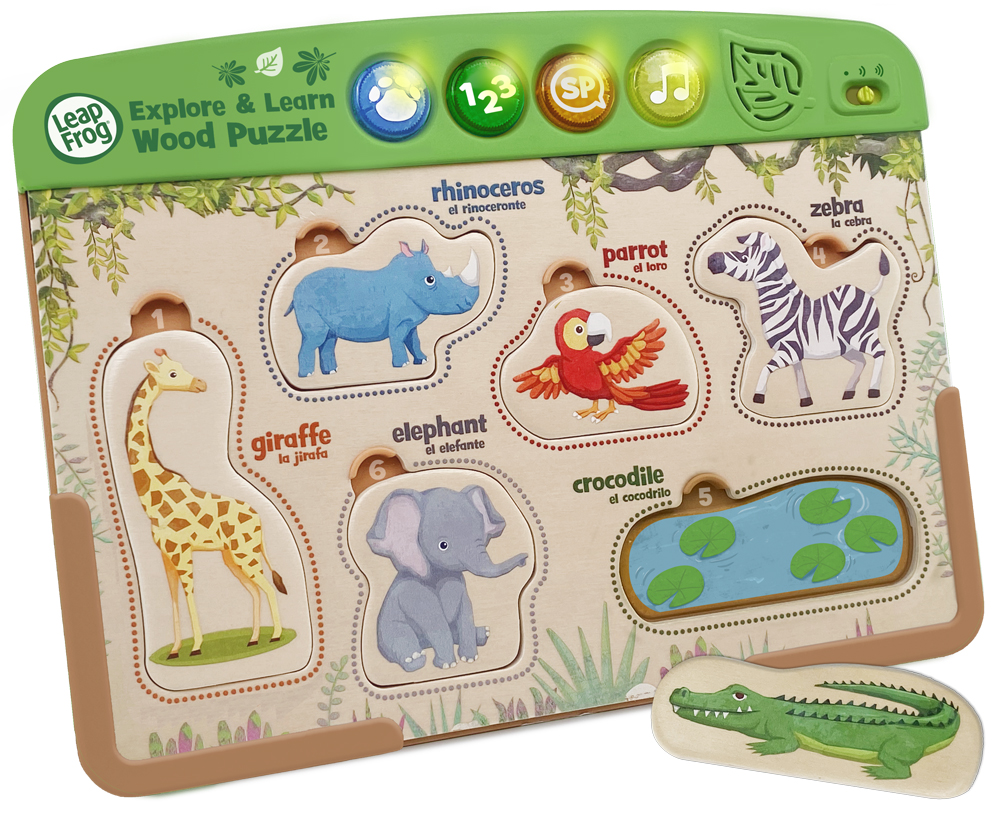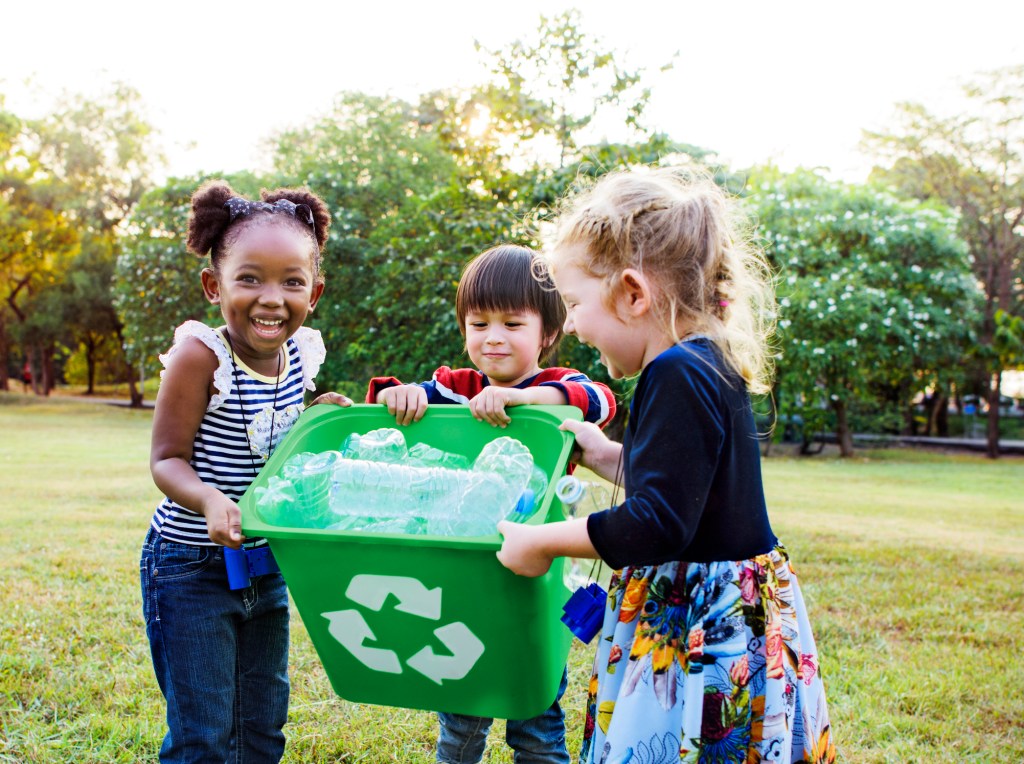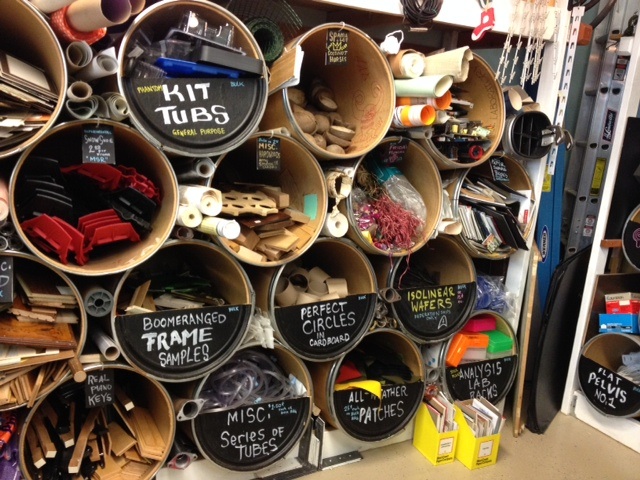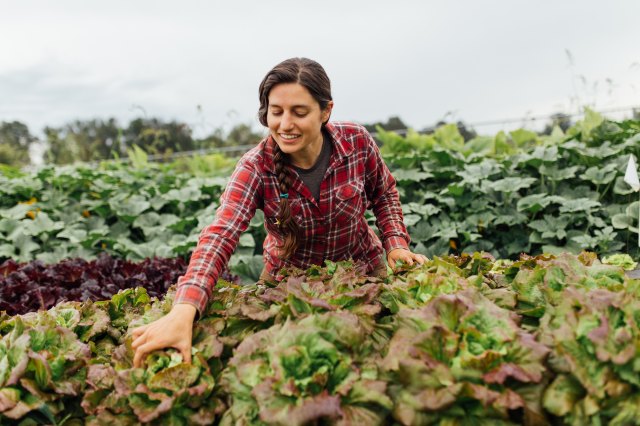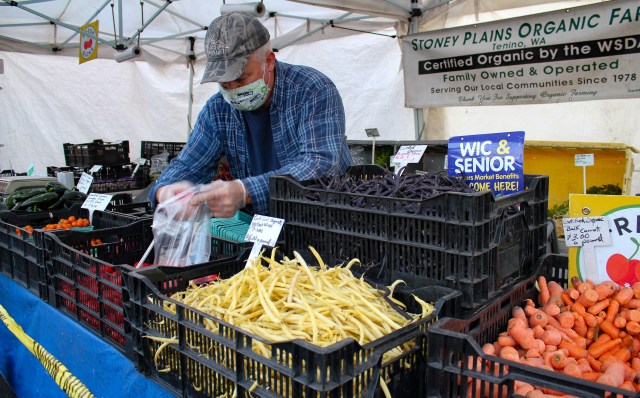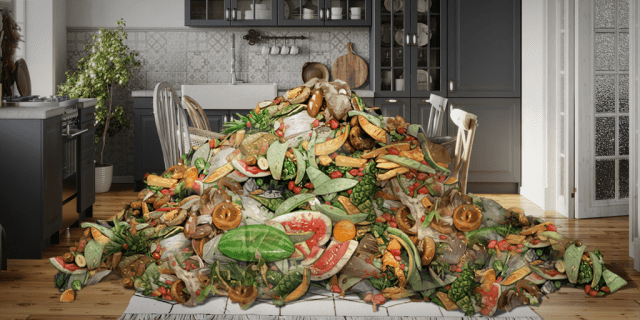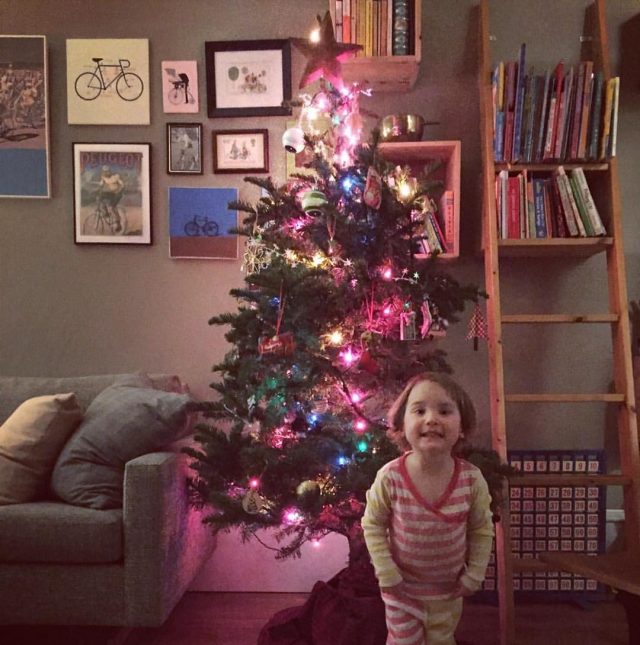Teaching your kids about conservation and the environment is a lot more than just recycling, but it doesn’t have to drastically alter your lifestyle either. There are dozens of small things that families can do to go green, and many of them have the added bonus of saving you money! Read on for simple ways to help your crew help the planet.
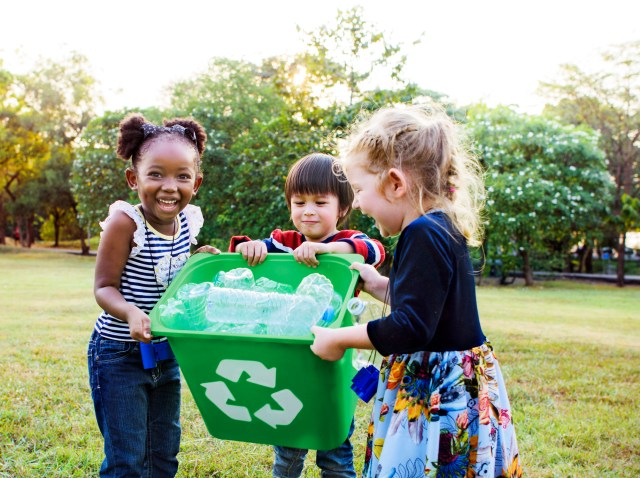
1. Pick up trash. Bring along a spare plastic bag or two to pick up wayside recycling or garbage on walks around the neighborhood.
2. Carry reusable totes. Cut back on landfill-clogging plastic (and to save money if your city charges for bags!). Stash a few in your car and a folding one in your purse.
3. Veg out! You don't have to have a plant-based diet year round but cutting back on the consumption of meat does help conserve valuable resources. Try implementing Meatless Mondays or another meat-free meal one night a week. Check out these vegetarian recipes to get inspired.
4. Buy secondhand. You can find kids' clothing, furniture, home accessories and art from the antique market, from a Facebook marketplace, garage sales or Craigslist. Not only will you be consuming fewer new products, but your stuff will have a story.
5. Use washable containers. Plastic containers work great in lunch boxes.
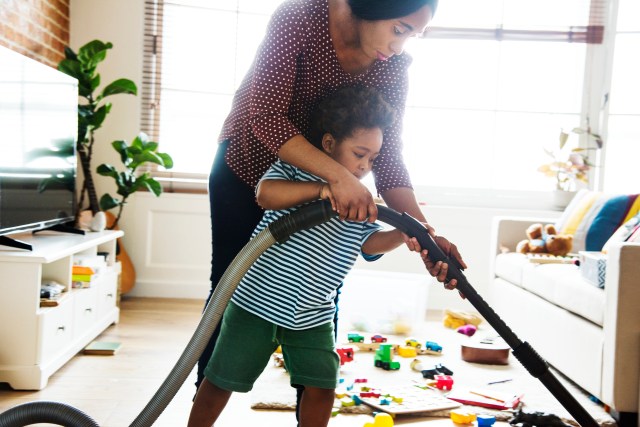
6. Turn off the lights. Simply making the rounds and flipping the switch has a huge impact on energy usage.
7. Ditch the chemicals. Opt for some non-toxic homemade cleaners that are simple and inexpensive.
8. Wash, rinse, and reuse plastic bags.
9. Use smart bulbs. If your kid needs a night light, make sure to use an LED light. It can be on all night without taking nearly as much energy as a conventional light.
10. Dispose of old paint and electronics the responsible way. Check with your city's garbage pick-up provider to see if they have days or drop-off sites. Most Goodwill stores accept these items for recycling.
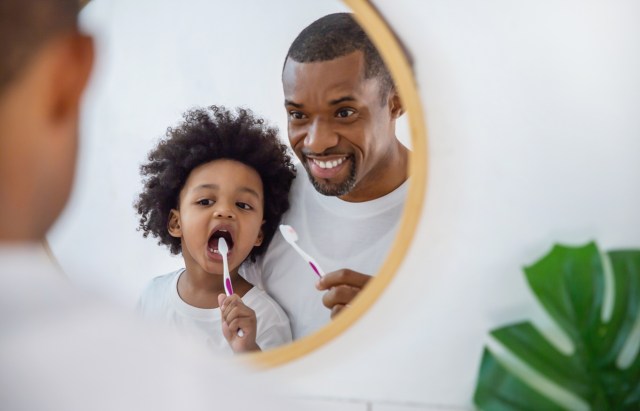
11. Use reusable/refillable water bottles all day, every day! You'll help decrease the amount of plastic clogging our oceans and landfills.
12. Buy rechargeable batteries. If you decide to go with regular batteries, make sure to recycle them properly.
13. Quit using paper towels to clean. Cut up old bath towels and tee shirts for cleaning instead.
14. Turn off the water when brushing your teeth.
15. Leave the car at home. Chose one trip a day to bike or use public transportation.
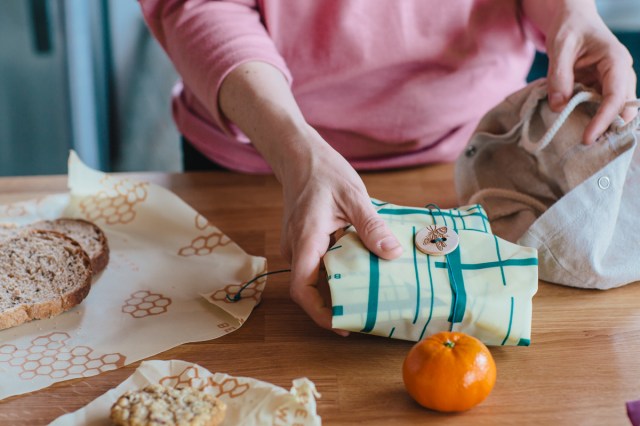
16. Buy sustainable goods. Be a conscious consumer and make sure the products you buy have a minimal effect on the environment.
17. Buy in bulk. Buy from the market's bulk section to avoid unnecessary packaging. Do you really need individual containers of olives or cheese sticks when you can buy in bulk and pack it yourself?
18. Take an hour or less and switch all your bills to paperless.
19. Save plastic to-go containers and make mini-greenhouses for starting seeds.
20. Check the family car's tire pressure once a month. Having the right amount will increase gas mileage by three percent (woot!).
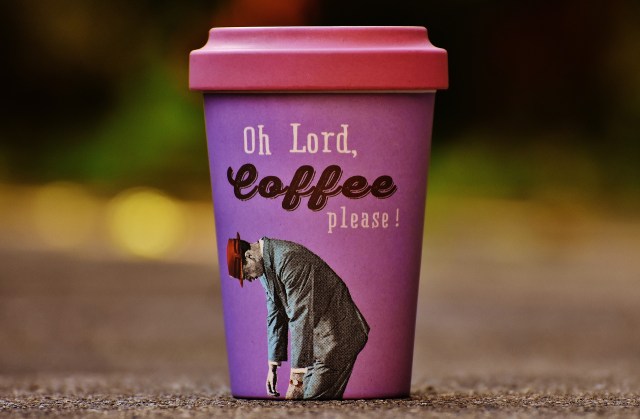
21. Put your computer to bed. Plan on stepping away from the keypad? Switch your computer to “sleep” mode to save energy.
22. Tote your own refillable coffee mug. Many coffee shops even charge less for patrons who bring their own mug.
23. Load up the dishwasher. Also, don’t worry about pre-rinsing. (Note: this doesn't work as well with old appliances!).
24. Avoid products with palm oil. Rainforests are still being destroyed in order to produce palm oil. It's found in everything from chocolate to shampoo. Read more here.
25. Use coffee grounds in a compost pile or under acidity-loving plants like azaleas.
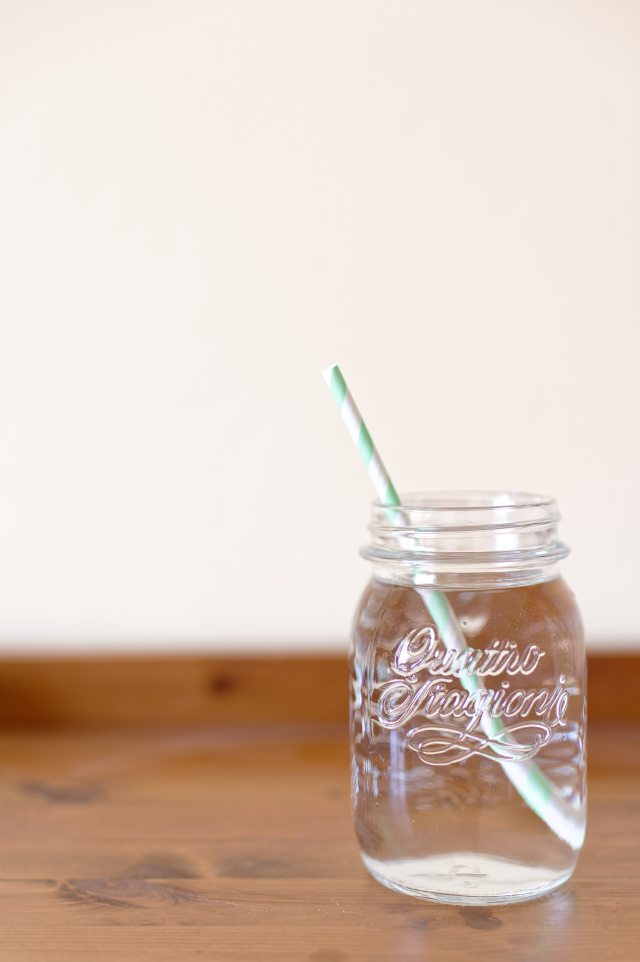
26. Designate one glass per day. Instead of grabbing a new cup each time a kid needs a drink, assign everyone a cup each day.
27. And speaking of compost ... If you don't have space or yard to start your own, see if your city offers a composting program or try and start one at your kid's school.
28. Share your old magazines with friends or doctor’s offices. It's always a good idea to black out your address first. And if no one wants them, recycle them!
29. Use cloth napkins instead of paper. Not only will you save trees but you'll look extra fancy.
30. Buy reusable snack bags. You won't have to buy plastic bags for months, if not years.
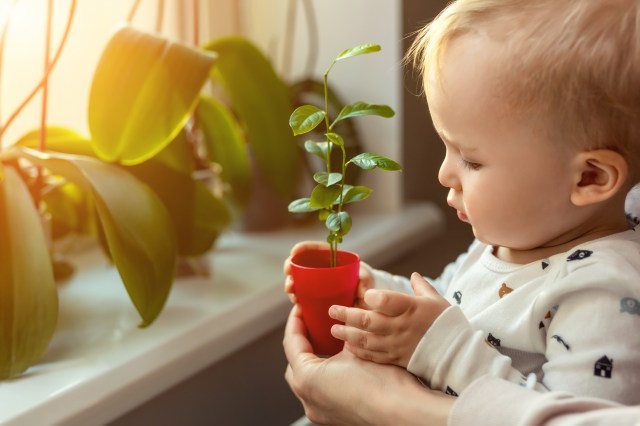
31. Sell old cellphones. All they're doing is taking up space in your desk drawers. You can send them to usell.com for cash.
32. Add some green. Houseplants are natural air filters, so grow one in your kiddo's room!
33. Dry your clothes in the sunlight or air. Even if they still need to "finish" in the dryer, you'll save electricity and gas by letting natural elements do half the job.
34. Cut up plastic six-pack rings! You probably heard about this when you were a kid but it's still a problem and it's an easy thing to do.
35. Talk to your kids about why going green is so important. You'll be creating future conservationists!

36. Unplug appliances (like toasters, hair dryers and coffee makers) when you’re not using them.
37. Organize a local beach or park cleanup.
38. Plant a pollinator-friendly garden in your yard, school or neighborhood.
39. Consider the rain garden: a garden designed to help filter run-off from parking lots. Many schools are creating these in medians and edges of parking lots.
40. Use calendars and greeting cards to make cool art.
41. Reuse old toys in inventive ways.
42. Stop using plastic straws. Switch to paper, silicone or metal straws. Ask your local businesses to do the same.
43. Stop using bath and body products with synthetic microbead exfoliants and opt for either natural exfoliating ingredients like scrubs with nut/seed exfoliants like St. Ive’s, or sugar scrubs.
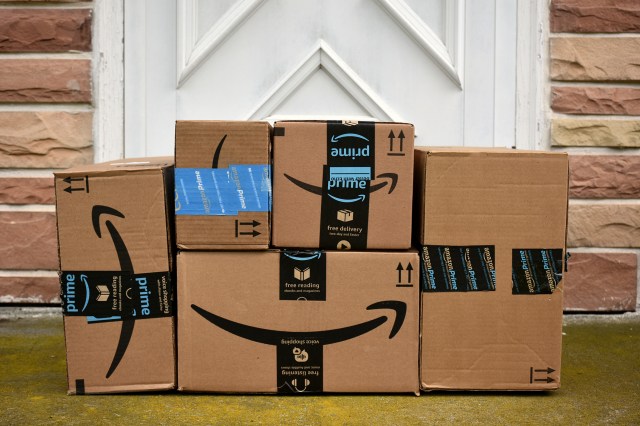
44. Consider swapping out plastic toothbrushes fort these bamboo toothbrushes. Use your old toothbrushes to clean grout and hard-to-reach places.
45. Create non-toxic crafts like this milk & vinegar plastic.
46. Stop using glitter. If you must use glitter, use this biodegradable brand, Today Glitter.
47. Use vinegar in place of glass cleaner.
48. Avoid food waste with these clever ideas.
49. Consolidate your Amazon orders, people! Yes, we know you can get it it one day. But if you order several items you can request they arrive in one shipment instead of multiple boxes.
50. Be kind to animals and all living things.
—Gabby Cullen, Amber Guetebier, Erin Feher, Kristina Moy, Chantal Lamers
RELATED STORIES:
Eco-Friendly & Sustainable Brands You’ll Feel Good Investing In
Baby Trend Alert: Eco-Friendly and Fashionable Diapers
15 Earth-Friendly Websites You Need to Bookmark Today
Our Top 5 Picks for Reusable Snack Bags on Amazon
